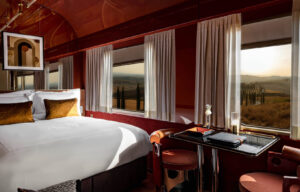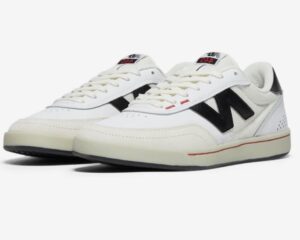Luxury is slowing down—and in doing so, it’s becoming more powerful, more immersive, and more exclusive than ever.
The recently launched La Dolce Vita Orient Express doesn’t just move guests from one Italian region to another. It transports them into a curated fantasy—one part nostalgia, one part cinematic indulgence, all wrapped in meticulous design and culinary brilliance. This is slow luxury: experiences that unfold intentionally, with depth, and command time—not in spite of the price tag, but because of it.
So why are people paying €2,000+ per night (after shelling out €500 just to reserve a spot months in advance) to be stuck on a train for 48 hours? Because that kind of immersive, uninterrupted attention is the new premium.
What Exactly
Is
Slow Luxury?
Slow luxury is the high-end counterpoint to fast everything—fast fashion, fast food, fast travel. It’s about:
- Intentionality: fewer experiences, done better
- Immersion: design that surrounds, not just impresses
- Time: the most finite luxury of all
- Exclusivity by presence, not just price
It’s luxury that doesn’t scream, but instead invites. And more importantly, it asks for your full attention—because what it offers is worthy of it.
Why La Dolce Vita Orient Express Works
The La Dolce Vita train isn’t just a product—it’s a system for deep engagement:
- Captive Attention: Guests are “onboarded” into a fully designed, fully controlled brand world for 24 to 48 hours. That’s better access than most retail spaces can ever dream of.
- Cultural Capital: Routes wind through 14 Italian regions—iconic cities, remote villages, and coastal stretches—offering more than sightseeing: a layered exploration of heritage and terroir.
- Design as Storytelling: Refurbished 1960s carriages, reimagined by Dimorestudio, recall the golden age of Italian design and glamour, without feeling like a themed ride. It’s style with soul.
- Culinary Anchoring: Meals by Michelin-starred chef Heinz Beck turn dining into ritual. Every course is a moment. Every ingredient is a location.
- Pre-booking as Prestige: Charging €500 to simply reserve a seat before booking—and still selling out through May—reframes anticipation as part of the luxury. It’s scarcity, by design.
The Strategy Behind It
What makes this model brilliant from a brand strategy and experience design standpoint?
- It’s not selling a product, it’s staging a memory
- You don’t just “ride” the train. You remember it, retell it, ritualize it. That’s brand loyalty on a neurological level.
- It creates direct access to HNWIs
- Few retail environments allow for 24-hour, uninterrupted engagement with ultra-high-net-worth individuals. This one does. And it’s beautiful.
- It reclaims infrastructure as narrative
- A train becomes a moving villa. A railway becomes a runway. This is a masterclass in reframing ordinary logistics into luxury experience.
- It builds long-form value
- The journey isn’t transactional. It’s temporal. That creates emotional equity and brand magnetism that no product placement ever could.
What Would
You
Pay to Be Captive In?
The real takeaway for experience designers and luxury brands isn’t just about trains. It’s about the value of undivided presence.
Ask yourself:
- What brand would you trust to take over two days of your life?
- What space would you willingly enter, phone down, expectations up?
- What memory would you pay not just for access—but for control, pacing, design?
In an age of overstimulation, the true luxury is curation. Not just of things, but of time and attention.
Impression
La Dolce Vita Orient Express is redefining not just train travel, but what premium engagement looks like. This isn’t about wheels on tracks—it’s about experience as architecture. It shows us that slow isn’t just about taking your time.
It’s about making time worth the price.
No comments yet.









